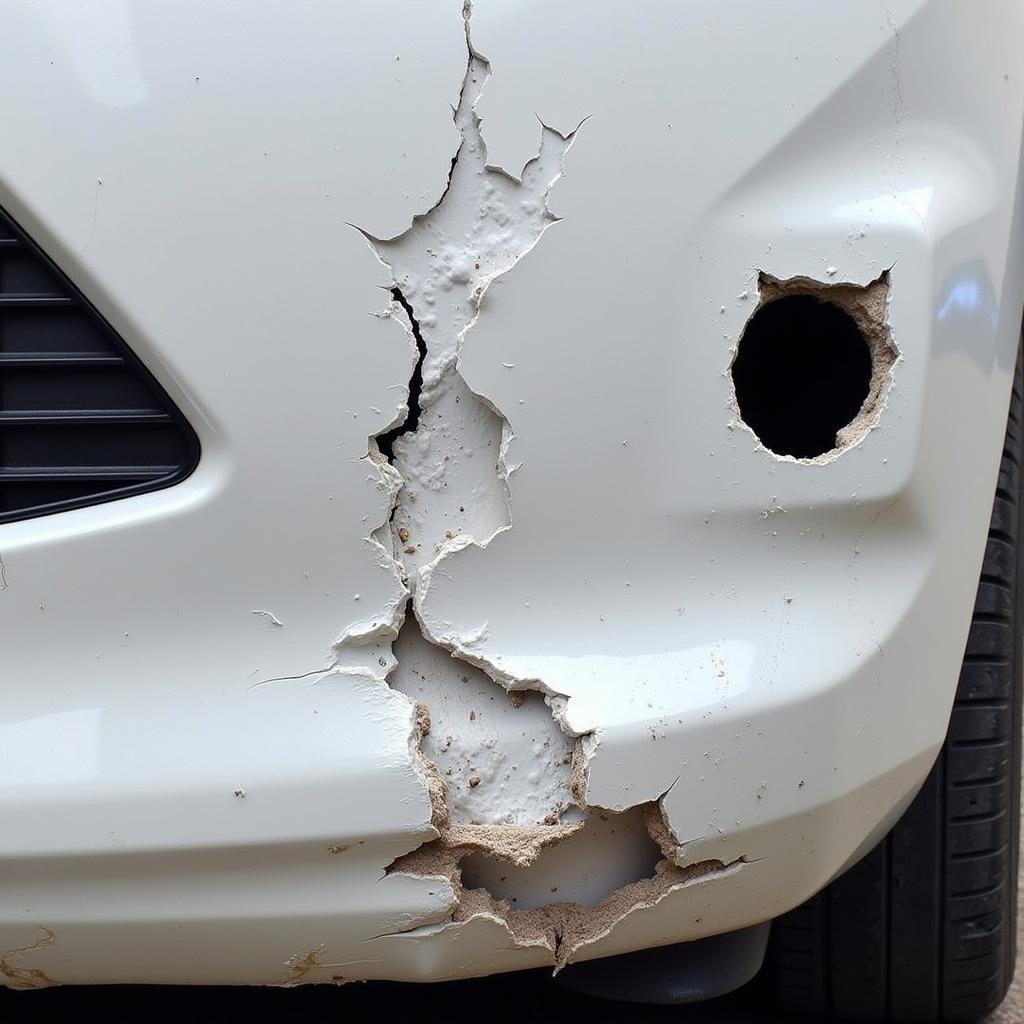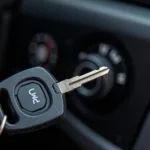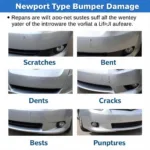Car bumper hole repair is a common issue for car owners. Whether it’s a small ding, a larger crack, or a puncture, understanding the repair process can save you money and keep your car looking its best. This guide will cover everything you need to know, from identifying the damage to choosing the right repair method.
Understanding the Extent of the Damage
Before attempting any car bumper hole repair, it’s crucial to assess the damage. Is it a small scratch, a deep gouge, or a complete tear? The size and type of damage will dictate the appropriate repair method. Small scratches may only require touch-up paint, while larger holes might necessitate patching or even bumper replacement. Identifying the material of your bumper is also important. Modern bumpers are typically made of plastic, but older models may be metal. This distinction will influence your repair approach.
After washing the affected area, carefully examine the hole. Is it a clean break, or are there jagged edges? Are there any other underlying damages to the bumper’s structure? A thorough inspection is the first step towards a successful car bumper hole repair. For smaller holes, a DIY approach might be feasible. However, for extensive damage, consulting a professional is recommended. They can assess the damage accurately and recommend the best course of action.
Learn more about fixing specific types of bumper damage with our guide on how to repair car bumper hole.
DIY Car Bumper Hole Repair Methods
For minor car bumper hole repair, several DIY methods can be effective. One popular method involves using a bumper repair kit. These kits usually contain a patching material, adhesive, and sandpaper. Another approach is to use plastic welding for plastic bumpers. This technique requires a specialized tool but offers a more permanent solution. For small holes, a filler putty can be used. After applying the putty, sanding and painting will blend the repair seamlessly.
When choosing a DIY method, consider your budget, skill level, and the extent of the damage. While some methods are relatively simple, others require more expertise. Regardless of the chosen method, proper preparation is key. Thoroughly cleaning and sanding the damaged area will ensure a strong bond and a smooth finish. Remember, a well-executed DIY repair can save you hundreds of dollars compared to professional services.
When to Seek Professional Help
While DIY solutions can be cost-effective, certain situations warrant professional car bumper hole repair. If the damage is extensive, involves structural components, or affects the car’s safety features, seeking a professional is crucial. Professionals have the expertise, tools, and experience to handle complex repairs. They can also ensure the repair meets safety standards.
Furthermore, professionals can often source matching paint for a seamless finish. If you’re unsure about your DIY skills or the extent of the damage, consulting a professional is always a wise choice. They can offer expert advice and provide a reliable, long-lasting repair. Find more information about repairing holes caused by screws in our guide on car bumper screw hole repair.
Preventing Future Bumper Damage
Preventing bumper damage is often easier than repairing it. Parking carefully, avoiding low-hanging objects, and installing bumper guards can significantly reduce the risk of damage. Regularly inspecting your bumper for minor scratches and addressing them promptly can prevent them from developing into larger, more costly problems.
Conclusion
Car bumper hole repair can range from simple DIY fixes to more complex professional interventions. By understanding the extent of the damage and choosing the appropriate repair method, you can keep your car looking its best and maintain its value. Remember to prioritize safety and seek professional help when necessary. For more information on repairing holes in plastic bumpers, check out our guides on how to repair hole in plastic car bumper and how to repair a hole in a plastic car bumper. Proper car bumper hole repair enhances both the aesthetics and safety of your vehicle.
FAQ
- Can I repair a large hole in my bumper myself? While possible, large holes often require professional expertise for optimal results.
- What type of glue is best for car bumper repair? Specialized bumper repair adhesives are recommended for a strong and durable bond.
- How much does professional car bumper hole repair cost? The cost varies depending on the extent of the damage and the shop’s rates.
- Can I paint over the repaired area? Yes, after the repair is complete and sanded smooth, you can paint the area for a seamless finish.
- How can I prevent further bumper damage? Careful parking, avoiding obstacles, and using bumper guards can help prevent future damage.
- What tools do I need for a DIY car bumper hole repair? Depending on the method, you may need sandpaper, a bumper repair kit, plastic welder, or filler putty.
- How long does a bumper repair typically take? DIY repairs can take a few hours, while professional repairs may require a day or more.
Need help with car bumper hole repair or other car diagnostic issues? Contact us via WhatsApp: +1(641)206-8880, or Email: [email protected]. Our customer support team is available 24/7.



